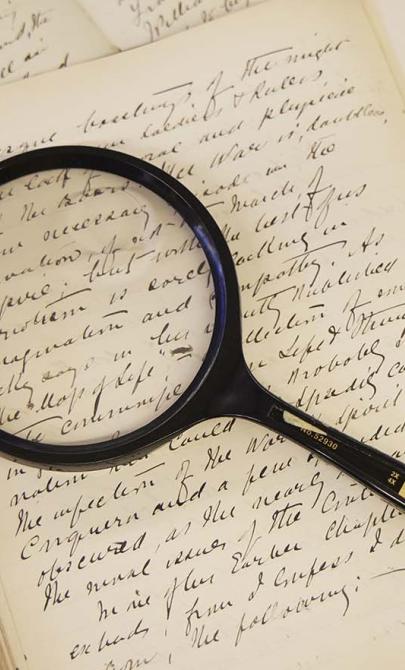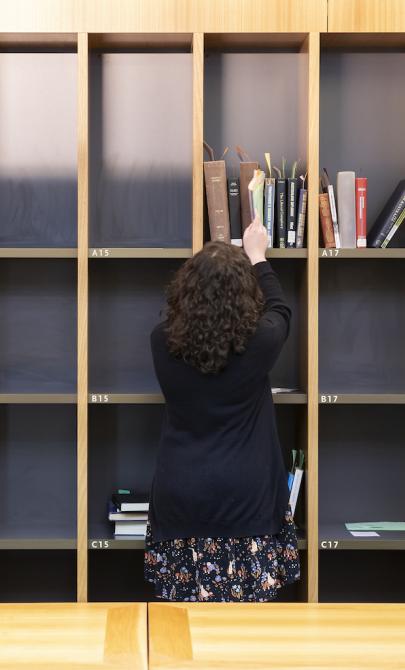Wang Collection
Key items in the collection
Highlights from this collection demonstrate its historical significance and variety.
The Wang Collection holds around 4,000 books, mostly in Chinese, published between 1950 and 2000 in China, Taiwan, and occasionally other locations. It includes modern editions of older works and Chinese translations of Western books. The collection's strength lies in historical texts covering all periods of Chinese history, including historical geography and biographies, with a special focus on the Taiping Rebellion.
Other topics in the collection include ethnology, politics, law, foreign relations, religion (Confucianism, Buddhism, Daoism, Islam, Christian missions), literature, philosophy, medicine, art, and many others. It also contains a large number of dictionaries and atlases.
The collection offers notable coverage of Taiwan’s history and politics, as well as regions like Central Asia, Mongolia, Tibet, Japan, Vietnam, and Southeast Asia. There are also Chinese books on Australian history, literature, and society.
In addition, the Wang Collection contains about 1800 English language books and many serials. The subject matter is similar, including translations of Chinese classics, the history of China, Taiwan and South-East Asia, Chinese foreign relations, migration, Australian history and biography, travel, Biblical studies, librarianship and language. Among the serial holdings are long runs of:
- Journal of Asian Studies (1969–2003)
- Asian Studies Review (1991–2002).
A large part of the archive consists of files relating to Wang’s work in the Library and his involvement in organisations such as the East Asian Librarians Group of Australia and the Asian Studies Association of Australia. In particular, there are files on the administration of the Orientalia Section, acquisitions, relations with other libraries, his visits to China in 1973, 1980 and 1983, his visit to Taiwan in 1980, and his survey of East Asian language collections in Australia (1984). Other papers include family and personal correspondence from 1948 onwards, diaries kept in his later years, notes made while working in the United States in 1959–60, research material for his Master’s thesis, newspaper cuttings, and papers concerning the Chinese Christian Church in Canberra.
The collection includes a copy of Wang’s Master of Arts thesis, The organisation of Chinese emigration, 1848–1888, with special reference to Chinese emigration to Australia (The Australian National University, 1969). The thesis was published by the Chinese Materials Center in San Francisco in 1978.
About Sing-wu Wang
Early career and move to Taiwan
Sing-wu Wang (1920–2004), also known as Sidney Wang, was born in Wenling, China, and graduated from the National Zhejiang University. In 1945, he joined the National Central Library in China as head of cataloguing and played a key role in rebuilding the library after the war. He was involved in moving rare books and artworks to Taiwan in 1948–49 and later became the librarian at the Yang-Min Shan Institute. In 1955, he was appointed director of the Taiwan Provincial Library in Taipei, where he oversaw the cataloguing of the library’s collections and the development of a new library building.
Works at the Library
In 1964, Wang was recruited by Harold White to become the chief librarian of the Orientalia Section at the National Library of Australia. During his time in the role, which lasted until his retirement in 1985, Wang expanded the collection from 40,000 to nearly 330,000 volumes. He developed strong ties with the National Library of China, leading to an influx of Chinese publications, both current and retrospective. In addition to strengthening the East Asian collection, the library’s holdings of Indonesian and other Southeast Asian materials also grew rapidly. Wang was known for his scholarly presence in the Orientalia Reading Room and was widely respected by generations of students and scholars in Asian studies.
Life after retirement
After retiring in 1985, Wang and his wife remained in Canberra, where they were founding members of the Chinese Christian Church. In 2003, a plaque was placed in one of the Asian Collections reading rooms at the National Library to honour Wang’s significant contributions to the library and his dedication to the growth of Asian studies in Australia.
Background to the collection
In early 2004, Wang offered his books and papers to the Library. His family sent them to the Library shortly after his passing in October 2004.
The books in the Wang Collection are part of the Asian Collections and are catalogued individually, with call numbers starting with WANG. The Wang papers are in the Manuscripts Collection under Acc 05/104. The collection has not yet been fully organised or listed.
This guide was prepared using these references:
- Andrew Gosling, Obituary of Sidney Wang, East Asian Library Resources Group of Australia Newsletter, no. 47, June 2005.
- Sing-wu Wang, Recollections of My Working Life in Chinese, American and Australian Libraries, Association for Asian Studies Committee on East Asian Libraries Bulletin, no. 101, December 1993, pp. 124–32.





